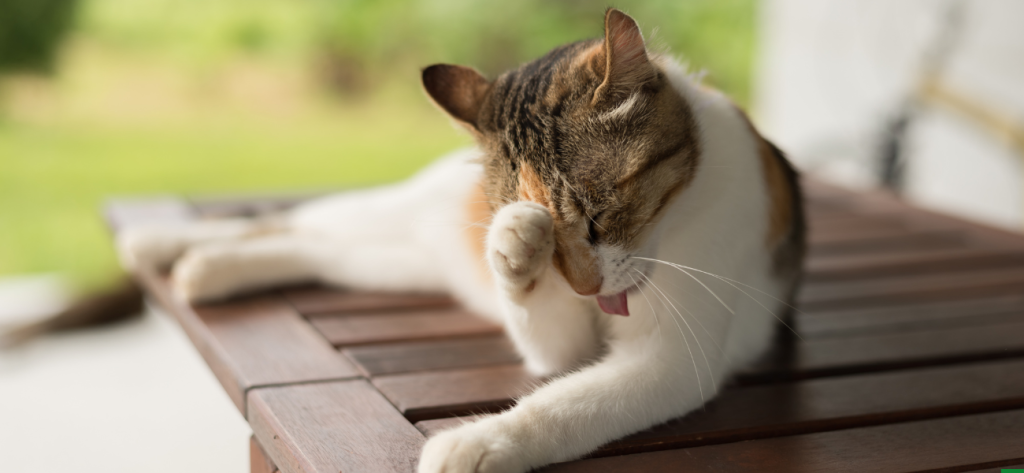Cats
Skin Allergies in Cats
Symptoms of allergies in cats
Allergies can be manifested in your cat through pruritus, itchiness, which results in frequent scratching, redness of the skin, diffuse hair loss, patchy hair loss, chewing/licking at a toe or foot and sometimes resulting skin infections.
Causes of Allergies in Cats
Allergies in cats are commonly caused by fleas, dietary factors, outdoor environmental factors and indoor environmental factors.
Flea control options have improved over the last few years, but fleas should still be considered as a leading cause of allergies in cats. The improvements in flea control medications have greatly reduced the incidence of flea allergy dermatitis, but it’s still something that should be checked for if your cat is showing signs of allergies and itchiness. Some specific signs of flea allergies may include small pink bumps which may be individual or in clusters, pinheaded size reddish or black insects crawling amongst the fur of your cat, excessive grooming, agitation and dark brown specks in your cats fur (flea dirt) the feces of fleas.
A top challenger to fleas are foods. The cat evolved as a carnivore and requires adequate protein in their diet. With the domestication of cats and development of cat food, the addition of grains to cat diets as become a common mediator of allergies in cats. Corn, wheat, soybeans and rice are now common additions to cat food. Rice is one of the least allergenic grains for cats. Grains are added to foods because they are a less expensive alternative to meats for adding calories and protein to cat food. Cat foods also contain other additives to improve palatability, flavor and storage. The allergic response to foods is a result of repeat exposure to an allergen resulting in specific inflammatory cells which can then react with other inflammatory cells at the target site such as skin.
Other common allergens include environmental factors (outdoor and indoor) which can result in the chain of inflammatory cells mentioned above. These may include indoor or outdoor molds, dusts, pollen, and chemicals. Indoor chemicals may include cleaners, soaps, perfumes, or any chemicals that the cat is continually exposed to. Outdoor allergens, which are somewhat less likely, may include plants that are cat is exposed to. These plants result in a more immediate inflammatory response because of the type of inflammatory cells produced upon contact exposure.
Discovering the culprit of a skin allergen can initially be approached by working with your veterinarian to observe and remove potential allergens. A systematical approach is often a good way to identify the allergen culprit. Your veterinarian will often start with food elimination diets as food allergens have become so much more common. Food elimination diets eliminate one food at a time so that you are able to see what food it is that is causing problems. Simply determine, based on the label, what is in your cats food and make a change to a product that doesn’t have one of those ingredients. If corn, a common allergen, is an ingredient it’s a good one to try eliminating first.
If an elimination approach isn’t working your veterinarian might suggest skin testing. Skin testing is helpful to identify environmental allergens. An additional approach is to improve your cats immune health is through probiotics and specifically the probiotic bacteria Lactobacillus reuteri found in Feliotic. This probiotic bacterium works with inflammatory regulating cells of the gastrointestinal tract to control and produce an appropriate response to “potential” gastrointestinal allergens

